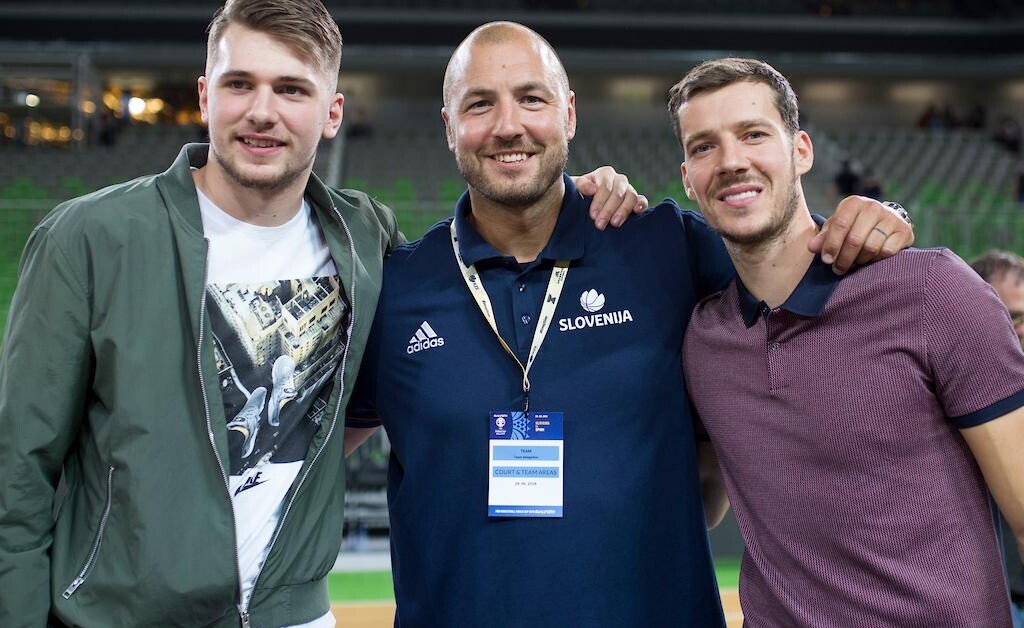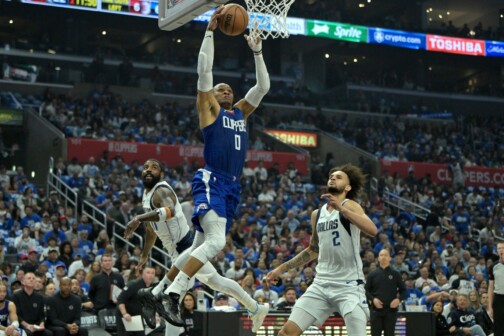On Friday, the Mavericks suffered a humiliating loss to the depleted Charlotte Hornets that dropped them to 11th place in the Western Conference. The team’s playoff hopes are slipping away. With that and more weighing on his mind, Luka Doncic walked into a press room in the American Airlines Center for postgame media availability. For the next three and a half minutes, he sat there, crushed, telling the assembled media how he’s lost the joy in playing basketball. The perpetual smile on his face was gone. That presser became a talking point for every talking head wondering how a team that was in the Western Conference Finals a year ago could look this lost. It was an encapsulation of everything that has gone so wrong.
Those of us from Doncic’s part of the world may have noticed something else, too. As Doncic delved into his personal and professional frustrations, he was wearing a black t-shirt that read “All I need is suvo meso and rakija”. It’s a Serbian slogan that loosely translates to “All I need is dry meat and a local liquor.” It encapsulates the Balkan way of living: keep things simple, don’t stress, and enjoy the moment.
Easier said than done, of course, when the Mavericks’ season is falling apart as its 24-year-old talisman faces the first real setback and criticism of his thus-far illustrious NBA career. As always, the basketball world and his home country of Slovenia are watching intently to see what Doncic does next. No one from Dallas can understand exactly what that means, but one person comes close. And once upon a time, Luka Doncic was looking up to him.
I started watching basketball and the NBA, in particular, as a small boy with my late father at the tail end of the ‘80s. At the time, my hometown of Ljubljana was a part of Yugoslavia, and our basketball program was at the top of the world. And I mean that literally. Led by future NBA players such as Drazen Petrovic, Vlade Divac, and Toni Kukoc, a young Yugoslavian team won the gold medal at the 1990 FIBA World Cup, including a semi-final win over a USA squad that featured college stars and future NBA All-Stars Alonzo Mourning and Kenny Anderson.
That game was the last straw that convinced USA Basketball to form the legendary Dream Team to compete in the Olympics in Barcelona two years later. The rematch with Yugoslavia never happened. The country fell apart in 1991, and Slovenia became the first of its former republics to declare independence.
Nostalgic basketball purists like my pops never forgot that generation, talking about what would and could have happened had those teams squared off one more time. But my generation moved on quickly. The Dream Team and the Chicago Bulls brought NBA basketball and Michael Jordan posters to our homes in the ‘90s via a half-hour highlights show called NBA Action that played clips of games from a week prior. Closer to home, our city’s basketball club, Olimpija Ljubljana, got the opportunity to play in top European basketball competitions as representatives of our new country, something that rarely happened before, when Serbian and Croatian clubs dominated the Yugoslav First Basketball League.
And as exciting as Jordan was to watch, we had something special of our own in Slovenia. In 1994, Olimpija signed a teenage prodigy, and, boy, was he something different. While Petrovic, Divac, and Kukoc were great, their style of play was so different compared to the high-flying athletes I saw in the half-hour dose of NBA highlights I patiently waited for every week. These crazy athletic dudes that I adored on the SLAM posters taped to the walls of my room—Jordan, Charles Barkley, Shaquille O’Neal—dunked so hard that the NBA seemed like an extravagant Hollywood movie, while European basketball was still stuck in black and white.
Then this young dude named Marko Milic came along and played just like them in front of our eyes in the legendary Hala Tivoli arena in Ljubljana, the court where Yugoslavia had lifted its first World Cup trophy in 1970 as Slovenian basketball legend Ivo Daneu won the MVP. Milic was 6-foot-6, 220 pounds, and he could jump out of the gym. As in, dunking over a car:
Hell, the guy once dunked so hard, he broke a backboard just like Shaq did:
Not only did Milic play above the rim like NBA stars, he also looked like one, a burly dynamo. He can thank his parents for those athletic genes. His father, Vladimir was a shot-putting champion in former Yugoslavia. His mother, Metka, held a Yugoslavian record in the discus throw. He became the first Slovenian basketball star of the new generation, a dazzling young player who played for our hometown club during an important time for our new country. Petrovic, Kukoc, and those other guys were my father’s heroes, heroes from another country that didn’t exist anymore. Milic was ours.
“Those were the best moments,” Milic tells me. “In the ‘90s, the first sports successes were special. Be it skiing or basketball, where a bunch of us kids came together under coach Zmago Sagadin [think a Slovenian equivalent of Bobby Knight] and thousands of crazy fans tried to climb to the top of European basketball. Every success was magnified and felt different.”
Those crazy fans Milic talks about? I was one of them. My pals and I followed Milic and his club on a special run all around Europe in 1997. We were on the road from Zagreb, to Bologna, to Milano, and finally to Rome, where Olimpija finished third in the Euroleague Final Four Tournament. The best way I can explain it is to imagine Florida Atlantic in this year’s March Madness: a small underdog team taking down giant after giant all the way to a Final Four appearance.
That run was one of Slovenia’s first team-sport success stories. And Marko Milic was the biggest, most exciting reason why it happened.
After that run, something that seemed unimaginable just a few years prior became reality. In 1997, the Philadelphia 76ers made Milic the first Slovenian drafted into the NBA when they selected him in the second round at No. 34. (They traded his rights to the Phoenix Suns that night.) He had just turned 20 years old: too young, many feared, to make a leap that big. Maybe he’d be better suited to stay a couple more years in Europe and polish his game.
But just like all of us mesmerized by the NBA on our satellite TVs, Milic wanted to experience the American dream.
“Everybody was asking me, ‘Why don’t you wait a few more years?’” he recalls. “‘Are you ready?’ It’s like if they called you up from a local theater in Kranj [a small Slovenian city and Milic’s hometown] where you’re a good actor, to be in a movie with Jack Nicholson in Hollywood. And you’ll say, ‘No, I’ll wait for a few years so I’ll be ready.’”
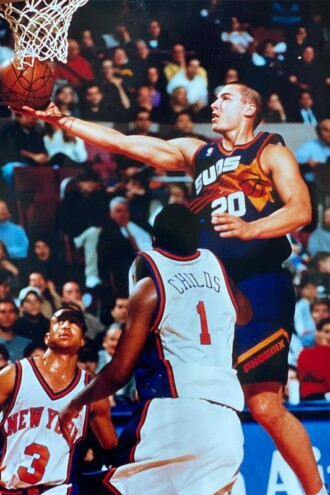
But the late ‘90s were a different time. Dirk Nowitzki was still a teenager in Germany, a year away from being drafted and many more from superstardom. Kukoc had carved out a place for himself, but as a role player on Jordan’s Bulls, not the superstar so many of us in Eastern Europe expected he’d become. As Milic put it, the NBA was very American back then. He believes he never got a fair shake.
“Non-American players were an afterthought at that time,” he says. “Big names before me struggled: guys like Petrovic, Arvydas Sabonis, Kukoc.”
It was also a time when the only thing most Americans knew about Slovenia was that it was far East of here. Which probably explains why one Milic highlight play prompted the Suns announcers to search for Slovenia in their world atlas. Just like back home, his dunks made people pay attention; those Phoenix announcers called him “the Slovenian Dr. J.”
But those highlights and opportunities were few and far between. Milic’s NBA career ended after two seasons and only 44 games played.
How do you start over at 22 years old? Milic did by returning home, where he spent one more season in the Euroleague for Olimpija. Then, it was off to conquer Europe, with powerhouses like Real Madrid and Fortitudo Bologna. He’d play in eight different countries across three continents during the course of his long career, finally retiring in 2015 at age 38 after a season in Kuwait. Along the way, he represented his country with pride, playing for Slovenia’s national team from 1995 until 2006, which included six EuroBaskets and one FIBA World Championship. The latter gave him the moment the Yugoslavian team had a quarter-century earlier, when, Milic and his teammates faced off against a star-laden USA team featuring LeBron James and Dwyane Wade.
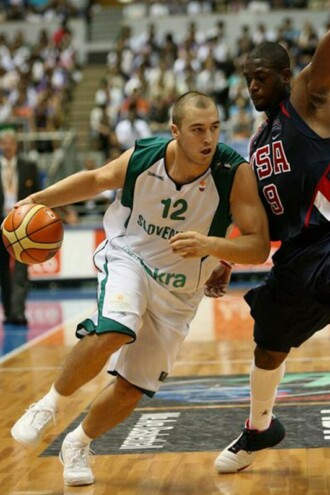
Milic played long enough to see the NBA landscape change. Nowitzki became its first European superstar, and the floodgates opened from there. That FIBA World Championship team Milic played on? It included six other Slovenians with NBA experience: Rasho Nesterovic, Goran Dragic, Beno Udrih, Bostjan Nachbar, Primoz Brezec, and Uros Slokar. Milic paved the way for all of them.
Still, even as it become more common than ever to see Slovenians in the NBA, I found myself growing numb more than giddy. I would occasionally check the box scores and watch a game if it was on TV, but never with anything near the diligence and obsession I had with Milic.
That changed when another teenage phenomenon from Ljubljana started to dominate grown men in one of the best clubs in Europe. He was even more familiar with Milic than I was. In 2008, Milic won the last of his four Slovenian League championship while playing for Union Olimpija. That team featured Milic, 22-year-old Goran Dragic, and a man named Sasa Doncic, whose 9-year-old son, Luka, spent that season watching their every move up close. The kid was front and center for the celebration, too, that famous smile plastered on his face as he stood inches from the trophy alongside his basketball idols.
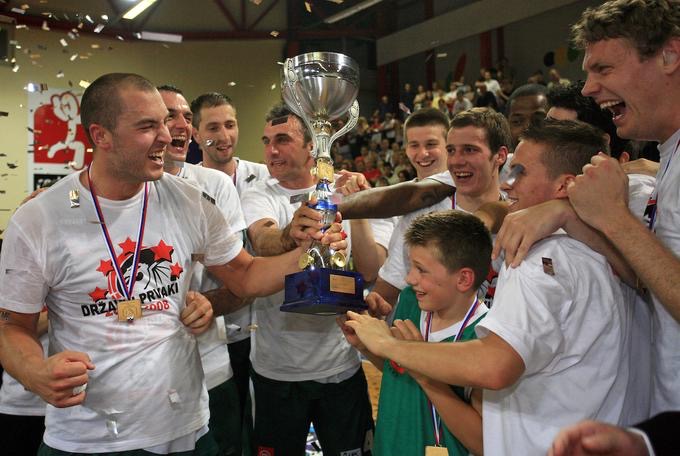
Seven years later, that boy made his debut for Real Madrid’s senior team—one of Milic’s old squads. Our country would change forever.
Fast forward to March 2023, and I’m watching courtside as two Slovenians work out in the American Airlines Center. I can’t help but laugh when I hear Croatian music blasting in the background on the arena entertainment system. The band playing was popular well before Doncic was born, which puts this song in the large category of music that no one knows how Doncic finds. I don’t know if Milic feels the same way or it’s just nostalgia, but either way, he laughs with me when we exchange a look. He’s used to this.
Last September, the Mavericks hired the 45-year-old Milic as a player development coach after he spent a year with Doncic on the Slovenian national team. He’s finally back on the NBA hardwood.
“Looking back, I get a bit nostalgic,” he says. “But on the other hand, this is such an unbelievable opportunity, to be able to play here as a player 25 years ago, to play all around the world on all continents, and to come back.”
His boss is another familiar face.
“When I first came into the NBA it was with Jason Kidd in Phoenix in the locker room,” he says. “And now we’re together again. I was a rookie back then, and he was a star. Like Luka he was changing how we see the game.”
Dallas’ opponent that night is Philadelphia, the team that drafted him. Milic works with Doncic on his pregame routine. He moves around the court, making sure Doncic drains enough shots from each of the spots he might shoot in a game. He simulates a pick-and-roll scenario with another assistant, Greg St. Jean. The three spend plenty of time together pregame.
Doncic is enjoying having Milic around. “We’re having a great time with Milko [Marko’s nickname],” he said earlier this season. “He likes it a lot here; he’s learning new things especially about the NBA. And he likes Dallas a lot, so I’m very happy he’s with me here.”
It’s too easy 🤷♂️ @luka7doncic // #MFFL pic.twitter.com/6AgI1rech1
— Dallas Mavericks (@dallasmavs) November 26, 2022
Like his protégé, Milic prefers to keep things loose. In short, the guy is hilarious: always smiling, joking, laughing. Even a brief conversation yields a funny anecdote or analogy. That comes in handy when working with a player who has only known pressure since he was a teenager. Just like Jamahl Mosley and Igor Kokoskov before him, Milic’s work is bigger than helping Doncic get his reps in. It’s also making sure basketball doesn’t become a chore. From personal trainers to coaches, everyone I talk about Doncic always tells me the same thing: the key to keeping Doncic engaged in practice is to make it a game, make it a competition, keep it fun. Others might take that—and Doncic’s usually goofy disposition—as a lack of discipline. Milic sees it as the thing that makes Doncic so special.
“It’s a game for him,” he says. “A game with no limits. … The rest of us, through the hardships of life, we put ourselves in a box with defined boundaries and limits. A regular person would think, I’m great—but scoring 60 or 50 three times in a week? There’s no chance.
“But Luka is like a child. He doesn’t have any limits.”
A quarter-century ago, their shared home country thought the same about Milic. In terms of results, we were wrong. But we were right in how he expanded our imaginations. He was the player who made us believe that a Slovenian can succeed on the big stage, whose explosive leaps showed us that someone from a small new European country coming into its own could fly like the Americans we watched on the other side of the world. Marko Milic carried the weight of a country’s expectations, and did something great with them.
Now, he’s helping Luka Doncic do the same. He’ll laugh at his music choices and nod knowingly at his t-shirt. Sometimes, you need people around who know where you came from. Especially when those people have been there, too.
Get the ItList Newsletter
Author



